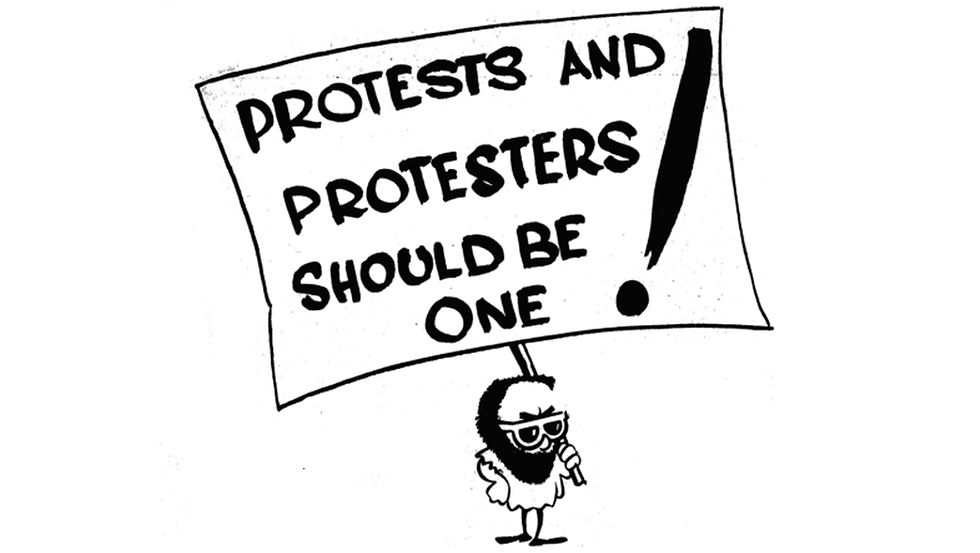On the march for Jesus and justice
- deansimpson7
- Oct 24
- 4 min read

BY BARRY GITTINS
Fifty years ago, The Salvation Army in Australia was casting a dubious eye at the growing culture of protest marches against social issues.
In a 1975 War Cry article credited to a Brigadier Bramwell Derbyshire, the protests – “part of the ’70s scene” – were described as being held by “sincere crusaders” and “selfish bigots”.
Across the world, citizens were protesting against wars, against government corruption, against racism, homophobia, unsafe and unfair working conditions, poverty, abuse of women, cruelty to animals, and many more causes.
Be it a “sit-down, a public meeting, a kidnapping, hijacking, a lock-out, a procession … [or] writing on walls”, the writer saw protesting as a “conditional” part of the democratic process, and duly thought his opinion was surely shared by “all sensible people”.
The brigadier declared that he loved animals so much he would have been a veterinary surgeon if he had not been “called to become a Salvation Army officer”.
Yet he could not “understand people who will rave and rant about cruelty to animals and leave generous bequests to animal charities, and yet remain oblivious and unmoved by the suffering of children and the sorrows of the old”.
“It needs to be said,” the brigadier conceded, “that there is nothing wrong with a good protest march, providing it is legal and proper and does not include senseless physical violence.”
That said, he added, “every man who joins in a protest march against others’ self-interest has only the right to do so if he himself is unselfish”.
What confuses readers today (denying people the right to protest in their own interest) doubtless also confused readers 50 years ago.
The brigadier said Salvos wearing their uniform do not “need to wear badges [opposing] cruelty to animals and children”, signifying membership “of the anti-smoking league” or railing against “gambling and over-indulgence”.
“I am against evil of every shape, sort and size, not only in theory but in practice,” he declared.
When The Salvation Army marched, he suggested, it was in protest against “exploitation, falsehood, laziness and self-indulgence”, and that Jesus spent his life protesting poverty, “ostentatious pride”, prejudice, cowardice, sin and expediency.
Jesus’ death, he added, turned him into the kind of protestor “this old world is needing”.
Roo shoot
Mission can be eventful, life is exceedingly unusual, and human beings experience genuinely weird stuff.
Take, for example, the respected Salvationist who wrote about the only recorded time that Australia’s best-known animal, the ’roo, shot a fella up in the Top End.
That’s right, (apparently), in 1971, a kangaroo shot a bloke at the Elizabeth Downs cattle station, up near the Daly River police station, NT.
‘Plenty of kangaroos have been shot by men,’ wrote the late Vic Pedersen, The Salvation Army’s pioneering flying padre (for the War Cry paper’s 10 January 1976 issue), but Vic reckoned a man named Archie Crosby was probably ‘the only man who has been shot by a kangaroo!’

In the course of his duties as manager of Elizabeth Down, Archie had shot and wounded a big ’roo and had wandered over to administer the coup de grace, leaning his rifle butt momentarily on the ground.
“The kangaroo reached up,” narrated Vic, “and caught the trigger, in an effort to scramble to its feet. The bullet passed through Crosby’s right arm. Fortunately, it missed the bone and main artery but tore a nasty hole. Crosby plugged the wound with flour and his mate, Tom Scott, then drove him 200 miles to hospital.”
When Vic later conducted a triple wedding at the Daly River cop shop, with Archie and Tom standing proudly as two of the bridegrooms, Vic said the scars on Archie’s ‘arm were all the evidence of the incident’ that he could bear witness to.
We could jump to conclusions about this yarn, but that’s probably best left to the ’roos. God knows they’re more inclined to bounce back from such wild stories.
Rolling along
Love, hope, faith and peace. Cheer, joy, music and song. Sincerity, cooperation, comradeship and loyalty. Prayer, works and ‘push’.
Emotions, spiritual qualities, actions all combined in people that embraced God above and the human beings all around us.

These are presented as the ‘spokes’ that combine to make salvation’s wheel, and Salvationists were calling for hands to turn that wheel.
Coming up to 91 years ago, in the 1 November 1934 issue of The Local Officer and Bandsman, the artist visualised the Army’s mission as a spiritual yet holistic one; salvation’s wheel proceeded to traverse the path of duty while meeting the pain of ‘the needy passer-by’ with deep compassion, reflecting the beauty of the God they worshipped.
The issue before, 1 October 1934, the magazine promoted General Edward Higgins’ promotion of Christlike leadership: a leader coaches, solves problems, encourages and inspires, showing the way forward and setting the pace by example.
Those two principles, servant leadership and holistic mission, can inspire us again, helping The Salvation Army serve both God and humanity.







